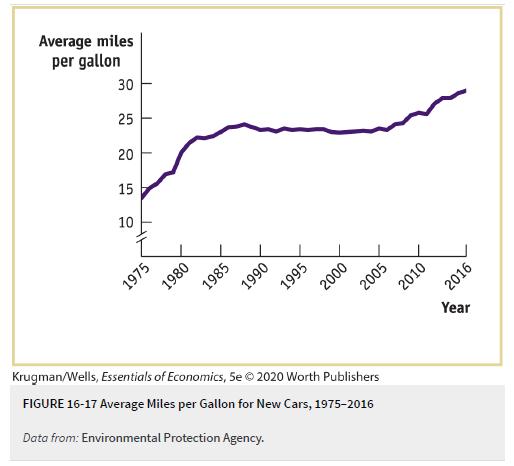If you or someone you know bought a new car recently, the odds are pretty good that
Question:
If you or someone you know bought a new car recently, the odds are pretty good that it was manufactured by one of two Japanese companies, Toyota or Honda. Together, these companies account for almost a quarter of total passenger car sales. But this was not always the case. In 1973, the two companies accounted for a mere 2.6% of U.S. auto sales. Over the course of the 1970s and early 1980s, the Japanese share quadrupled. Why?
Toyota did a lot of things right: during the 1960s it had perfected the technique of so-called just-in-time production or lean manufacturing, a production system that yielded lower costs, higher productivity, and higher quality compared to American production techniques. (You may recall our discussion of lean production in an earlier Business Case.)
But Toyota was lucky as well. During the 1970s, Americans began to switch from enormous sedans to smaller cars, a market that American car companies had neglected. The few choices they did offer were of poor quality, and included the AMC Gremlin and Ford Pinto, among others. In contrast, Toyota, having long produced small, reliable, fuel-efficient cars for Japan, its home market, was ready to fill the gap.
But why the shift to smaller, fuel-efficient cars? One answer is that the United States experienced a series of severe recessions, which could have induced consumers to seek cheaper alternatives to traditional big cars. As it turns out, however, other recessions have not led to major downsizing in car purchases. Figure 16-17 shows the average number of miles per gallon for new passenger cars since 1975, which has generally trended upward, but increased at a much faster rate in the mid- to late 1970s and early 1980s, before stabilizing in the early 1990s—this despite the fact that many consumers were buying more fuel-efficient cars at that time. And, as you can see, there was only a slight increase in average mileage after 2007, even though the Great Recession that began that year was deeper and more prolonged than any slump since the 1930s.

So what was different in the 1970s? At that time, two bad things were happening:
unemployment was rising sharply, but so was the price of gasoline. After 2007, as unemployment soared, gas prices fluctuated but eventually came down to levels well below those before the recession. So people bought fewer cars, but not, by and large, smaller cars.
The point is that Toyota got its big break not just by producing good cars, but also by producing the particular kind of good car that suited consumers during the economic troubles of the 1970s.
Questions:-
1. Why do you think gas prices rose in the recessions of the 1970s but fell after the Great Recession?
2. What does this say about the causes of the recessions in each case?
3. In the 1970s, Toyota was able to increase its American sales despite interest rates on auto loans surging as high as 17.5%. In contrast, after 2007, auto loan rates fell to their lowest levels in history; car sales also declined. Explain why.
Step by Step Answer:






